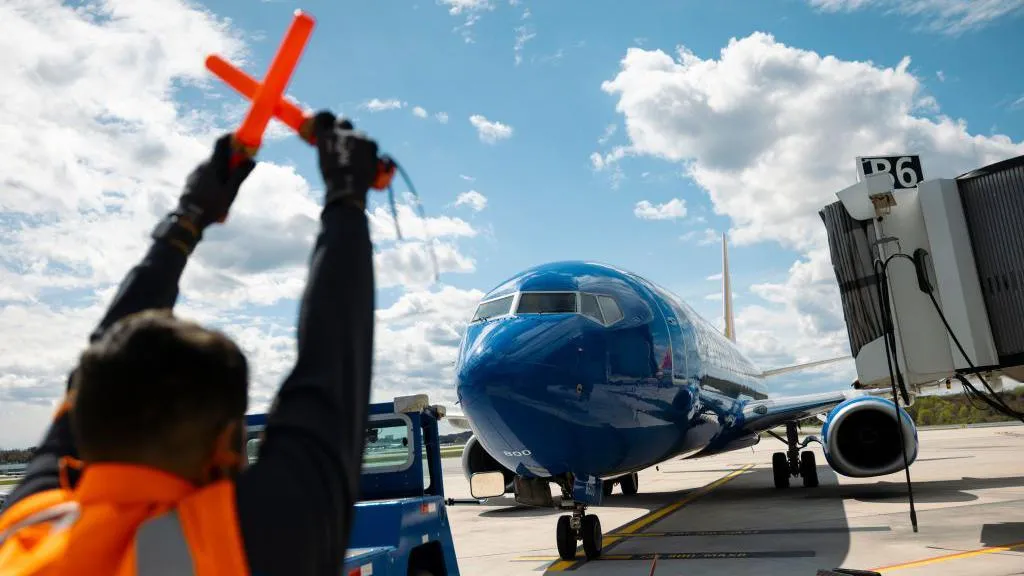Southwest Airlines, a company renowned for its distinctive approach to air travel, is set to make a major shift in its seating policy after half a century of maintaining a unique system of unassigned seating. This decision marks a significant change for both the airline and its passengers, as the company plans to implement assigned seating, introduce new fees, and expand its flight options.
A Historic Shift in Seating Policy
The Legacy of Unassigned Seating
For fifty years, Southwest Airlines operated with a free-for-all seating policy, allowing passengers to choose their seats upon boarding. This approach, which set Southwest apart from other airlines, was initially implemented to streamline the boarding process and enhance operational efficiency. Passengers checked in and were assigned to boarding groups based on their check-in time, with early boarders given the advantage of selecting their preferred seats.
This system was celebrated for its simplicity and for allowing passengers to avoid extra fees for seat assignments. Southwest built a reputation for customer-centric service, avoiding charges for checked baggage and other fees that were common in the industry. This no-frills, yet customer-friendly approach contributed to the airline’s popularity and success during its early years.
The Decision to Change
Despite its historical success, Southwest has decided to move away from this long-standing practice. The decision to introduce assigned seating marks a pivotal shift in the airline’s strategy. Research conducted by the airline revealed that a significant majority of passengers—80%—preferred assigned seating over the traditional open seating model. This feedback, coupled with changing industry standards and competitive pressures, prompted Southwest to reevaluate its seating policy.
The company’s Chief Executive Officer, Bob Jordan, emphasized that the changes are part of a broader strategy to “unlock new sources of revenue” and adapt to modern consumer preferences. The new policy will not only include assigned seats but also introduce “premium” seating options with added legroom, add red-eye flights, and overhaul the boarding system.
Financial Pressures and Strategic Responses
Profit Decline and Revenue Goals
Southwest’s decision comes amid financial challenges. The airline reported a significant drop in profits for the April-June period, with earnings falling to $367 million—a 46% decrease compared to the previous year. This sharp decline reflects broader pressures faced by the airline industry, including increased operational costs and fluctuating demand.
To address these financial challenges, Southwest is implementing several strategic changes. The introduction of premium seats, which will offer more legroom and better amenities, is expected to contribute to increased revenue. Additionally, the airline is forecasting that these seating changes could generate over $1 billion in additional revenue.
The company’s new approach also includes the launch of red-eye flights starting next year on routes such as Las Vegas to Baltimore and Los Angeles to Nashville. These new flights aim to capture a segment of the market seeking convenient, overnight travel options.
Competitive and Operational Challenges
Southwest’s financial struggles have been compounded by operational issues, including delays in plane deliveries from Boeing and increased pressure on fare pricing. The airline, like many others, overestimated domestic travel demand, leading to capacity adjustments and a need for operational improvements.
The airline’s profitability has lagged behind industry peers, leading to a significant drop in its share price over recent years. In response to these challenges, Elliott Investment Management—a prominent activist investor known for its aggressive stance on underperforming companies—acquired an 11% stake in Southwest. Elliott has called for major changes, including the removal of Mr. Jordan, citing concerns over outdated software, monetization strategies, and operational processes.
Reactions and Future Prospects
Industry and Shareholder Reactions
The announcement of these significant changes has been met with mixed reactions. While some industry observers view the shift as a necessary adaptation to modern airline practices, others are concerned about the impact on Southwest’s brand identity and customer loyalty. The introduction of assigned seating and premium options could alienate passengers who valued the airline’s traditional, no-frills approach.
Shares in Southwest rose by more than 6% following the announcement, reflecting a positive response from investors who see potential for increased revenue and improved financial performance. The company’s stock market reaction suggests confidence in the planned changes and their potential to enhance profitability.
The Path Forward
As Southwest transitions to its new seating policy, the airline will face several key challenges and opportunities. The implementation of assigned seating and premium options will require careful management to ensure a smooth transition for passengers and staff. The company must also address the competitive pressures and operational issues that have impacted its financial performance.
The coming months will be crucial for Southwest as it adapts to these changes and seeks to capitalize on new revenue streams. The airline’s ability to effectively manage these transitions and respond to evolving market conditions will determine its success in navigating the current challenges and securing a stronger position in the competitive airline industry.
Conclusion
Southwest Airlines’ decision to abandon its 50-year tradition of unassigned seating represents a significant shift in the airline’s approach to customer service and revenue generation. This change, driven by evolving passenger preferences and financial pressures, will mark a new chapter for the airline as it adapts to modern industry standards.
While the move is designed to unlock new revenue opportunities and address operational challenges, it also carries risks associated with altering a long-established brand identity. As Southwest embarks on this transition, the coming months will reveal how effectively it can balance innovation with maintaining the core values that have defined its success for decades.
The future of Southwest Airlines will be shaped by its ability to implement these changes successfully, respond to market dynamics, and continue delivering value to its passengers and shareholders.


